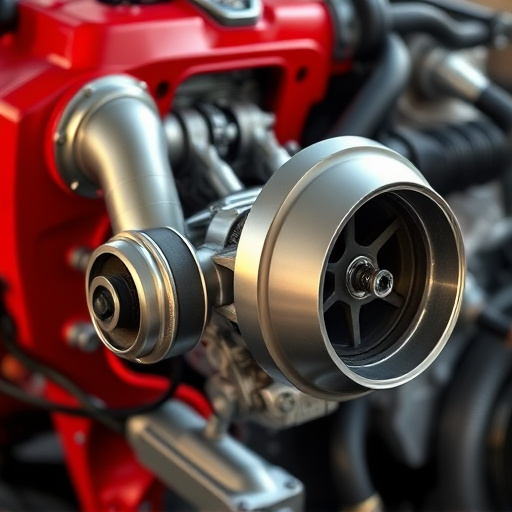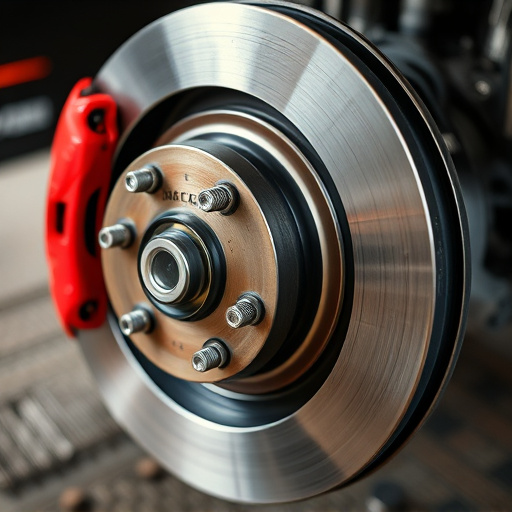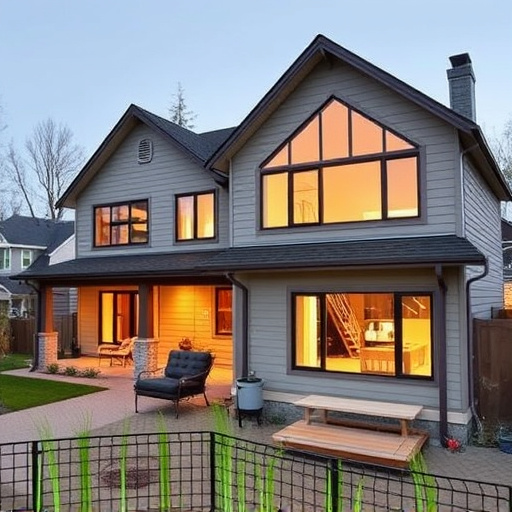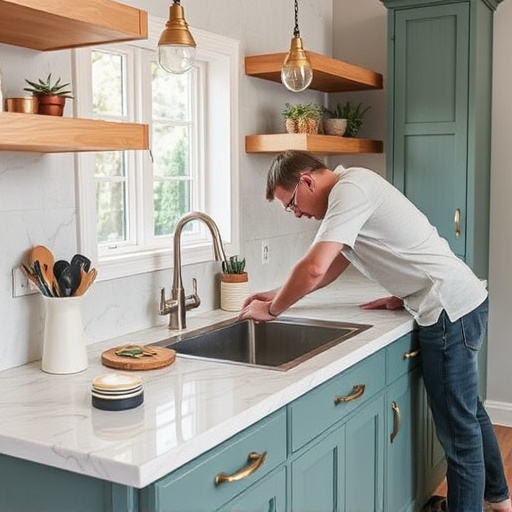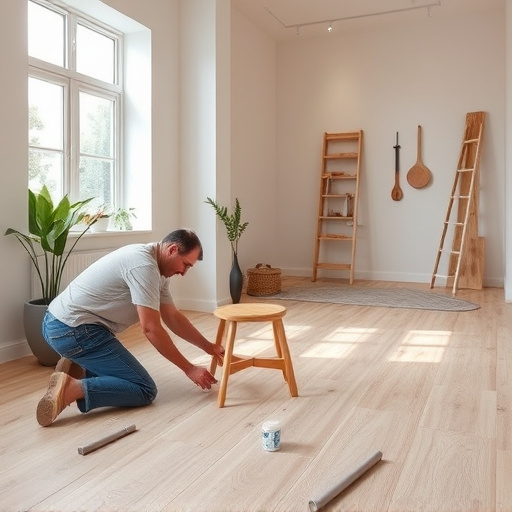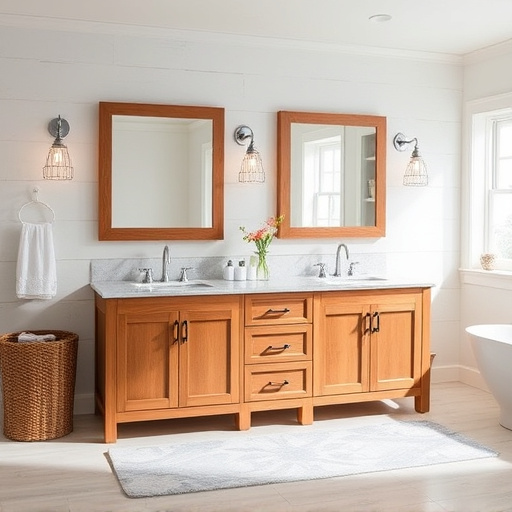When replacing floors in rooms with heated systems, choose temperature-resistant materials like ceramic tiles, natural stone, or treated engineered hardwoods to maintain comfort and efficiency. In humid areas, select moisture-resistant options for damage prevention. For aesthetic appeal, consider durable, heat-retentive materials enhancing both style and functionality. Modern innovations include eco-friendly heated flooring solutions. Successful flooring replacement requires understanding these specific considerations for long-lasting, visually appealing results.
When considering flooring replacement, especially in homes with heated flooring systems, it’s crucial to understand the unique considerations at play. This article guides you through the process, from comprehending the intricacies of heated flooring systems and their specific replacement needs, to identifying key factors that influence your choice. We’ll also explore suitable flooring options tailored for these environments, ensuring a seamless transition that maximizes both comfort and functionality.
- Understanding Heated Flooring Systems and Their Unique Replacement Needs
- Key Factors to Consider When Replacing Flooring in Heated System Environments
- Exploring Suitable Flooring Options for Effective Heated Floor Replacement
Understanding Heated Flooring Systems and Their Unique Replacement Needs

Heated flooring systems, a popular choice for adding comfort and luxury to homes, particularly during chilly seasons, require specialized consideration when it comes to flooring replacement. These systems, often integrated into the subfloor, are designed to distribute heat evenly across a room, providing a warm and cozy environment. When it’s time to replace the flooring in such spaces, several unique factors come into play. One of the primary concerns is selecting materials that can withstand high temperatures without warping or damaging the heating system.
During kitchen renovations or home remodeling projects involving heated floors, homeowners and contractors must choose replacement flooring options carefully. Soft and pliable materials are generally avoided as they may deform under heat. Instead, hard surfaces like ceramic tiles, natural stone, or engineered hardwoods that have been specifically treated for temperature resistance are ideal choices. Understanding the specific requirements of heated floor systems ensures a successful flooring replacement process while preserving the comfort and efficiency of your living spaces, especially during a kitchen remodel.
Key Factors to Consider When Replacing Flooring in Heated System Environments

When considering flooring replacement in environments with heated flooring systems, several key factors come into play. Firstly, compatibility is paramount; the new flooring must be designed to work seamlessly with the existing heated floor system, whether it’s radiant heat, electric mats, or hydronic pipes. This ensures even heat distribution and prevents any potential damage to the heating elements.
Another crucial aspect is moisture resistance, especially in spaces like bathrooms or kitchens that are prone to high humidity levels. Water-repellent flooring options not only prevent water damage but also contribute to a more comfortable and dry environment beneath your feet. Furthermore, consider the structural integrity of the existing subfloor; in home additions or bathroom remodels, where floors might be reinforced, choose flooring materials that align with these structural enhancements for a durable, long-lasting solution.
Exploring Suitable Flooring Options for Effective Heated Floor Replacement
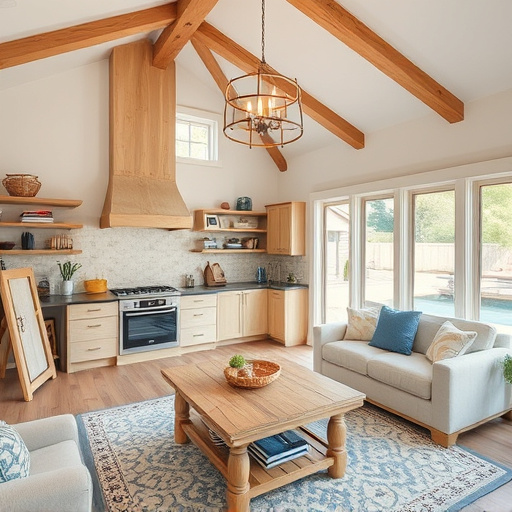
When considering flooring replacement for heated floor systems, exploring suitable options is a crucial step in any successful home transformations. The ideal flooring should complement the existing system while enhancing comfort and aesthetics. For instance, ceramic tiles or natural stone are excellent choices due to their durability and ability to retain heat efficiently. These materials not only add visual appeal but also ensure consistent warmth underfoot, making them perfect for whole house remodels aiming to create functional spaces that are both stylish and comfortable.
Additionally, modern innovations offer eco-friendly alternatives like heated flooring mats or underfloor heating systems integrated into specialized flooring materials. These options provide exceptional comfort and energy efficiency, aligning with the growing trend towards sustainable flooring replacement. Choosing the right flooring can significantly impact the overall ambiance and practicality of living spaces, ensuring a pleasant and efficient environment for residents.
When replacing flooring in homes or commercial spaces equipped with heated flooring systems, understanding the unique requirements of these systems is essential. This comprehensive guide has highlighted key factors and suitable flooring options to ensure successful and long-lasting replacements, enhancing comfort and efficiency in heated floor environments. By carefully considering these aspects, you can achieve optimal results and avoid costly mistakes during flooring replacement projects.

